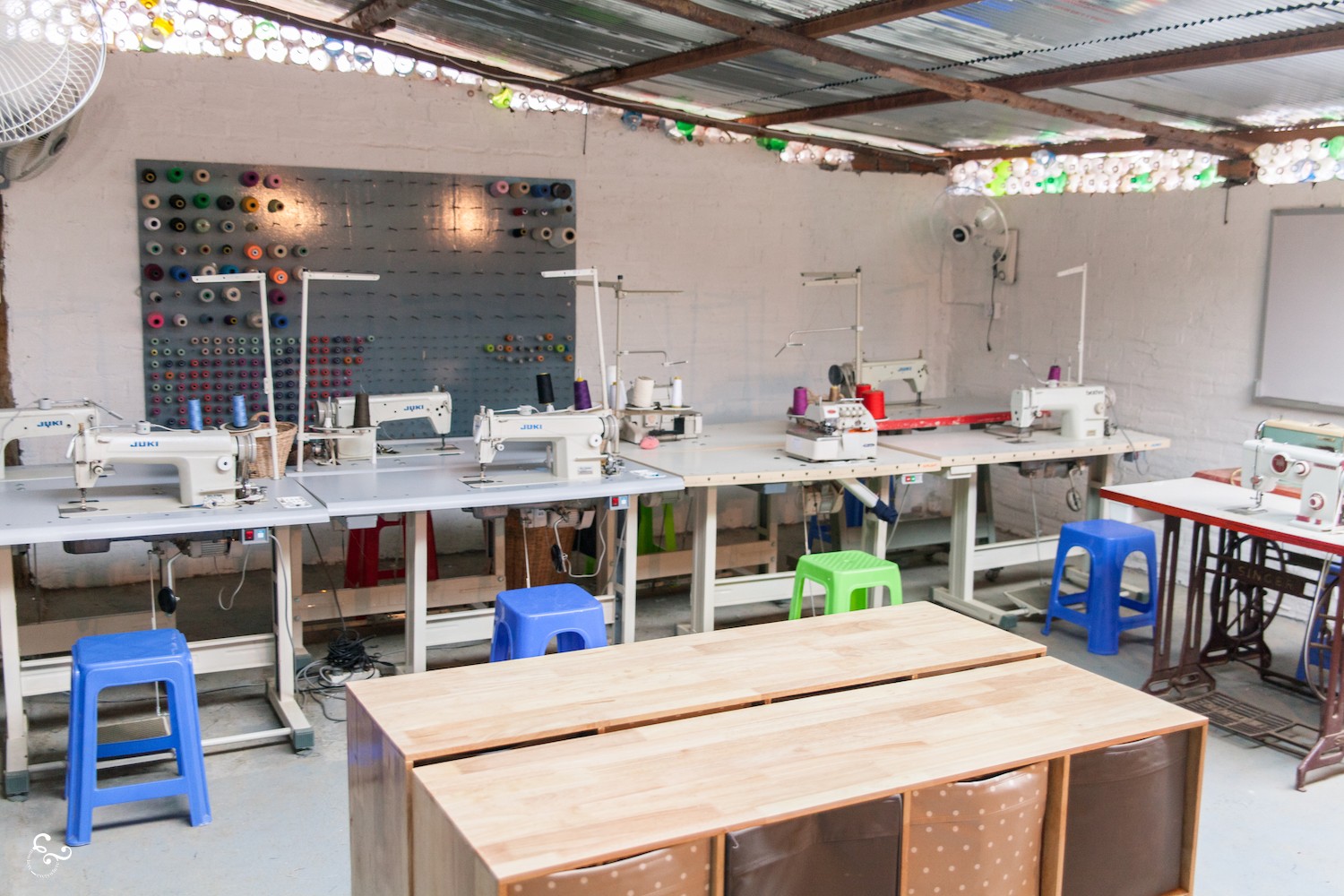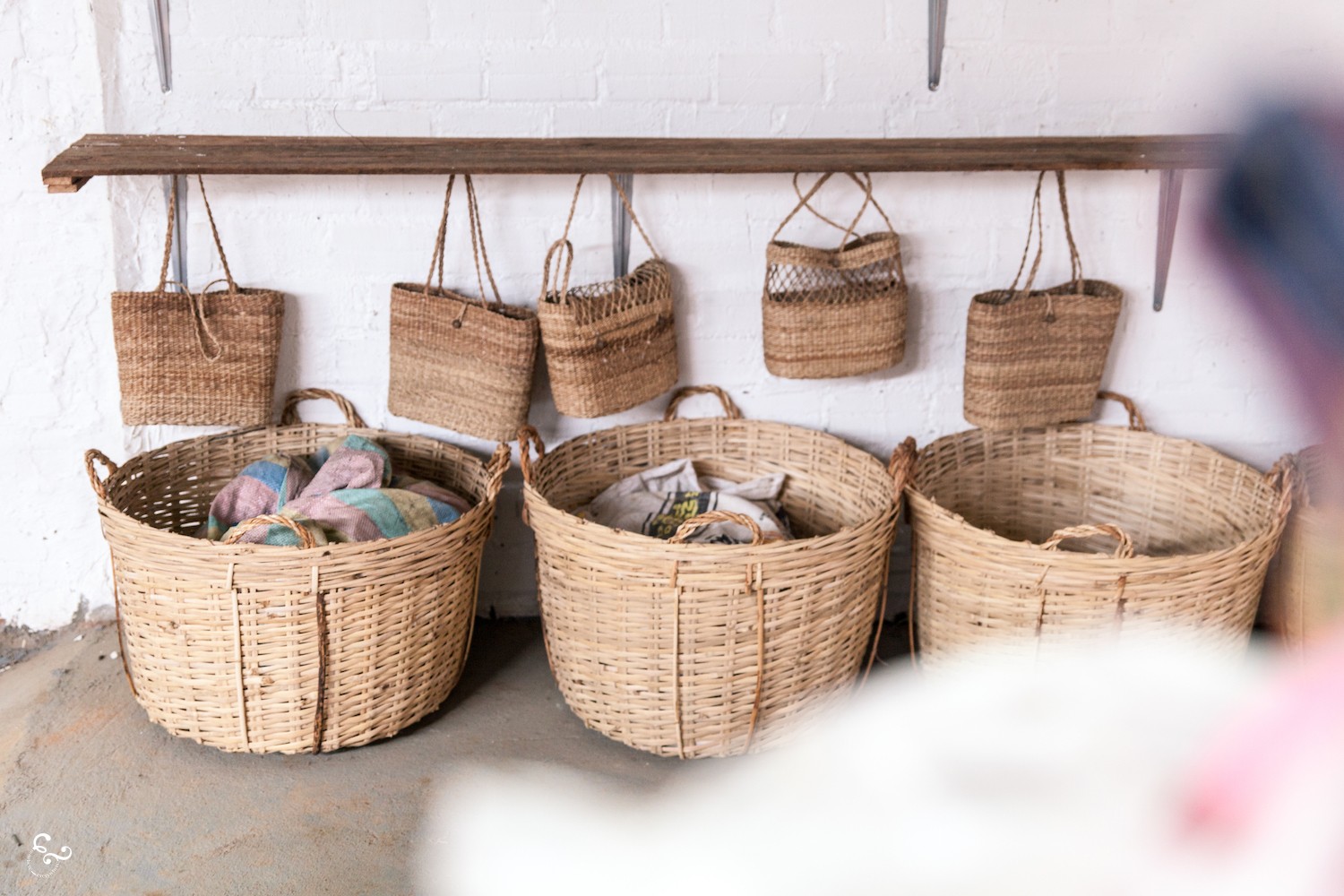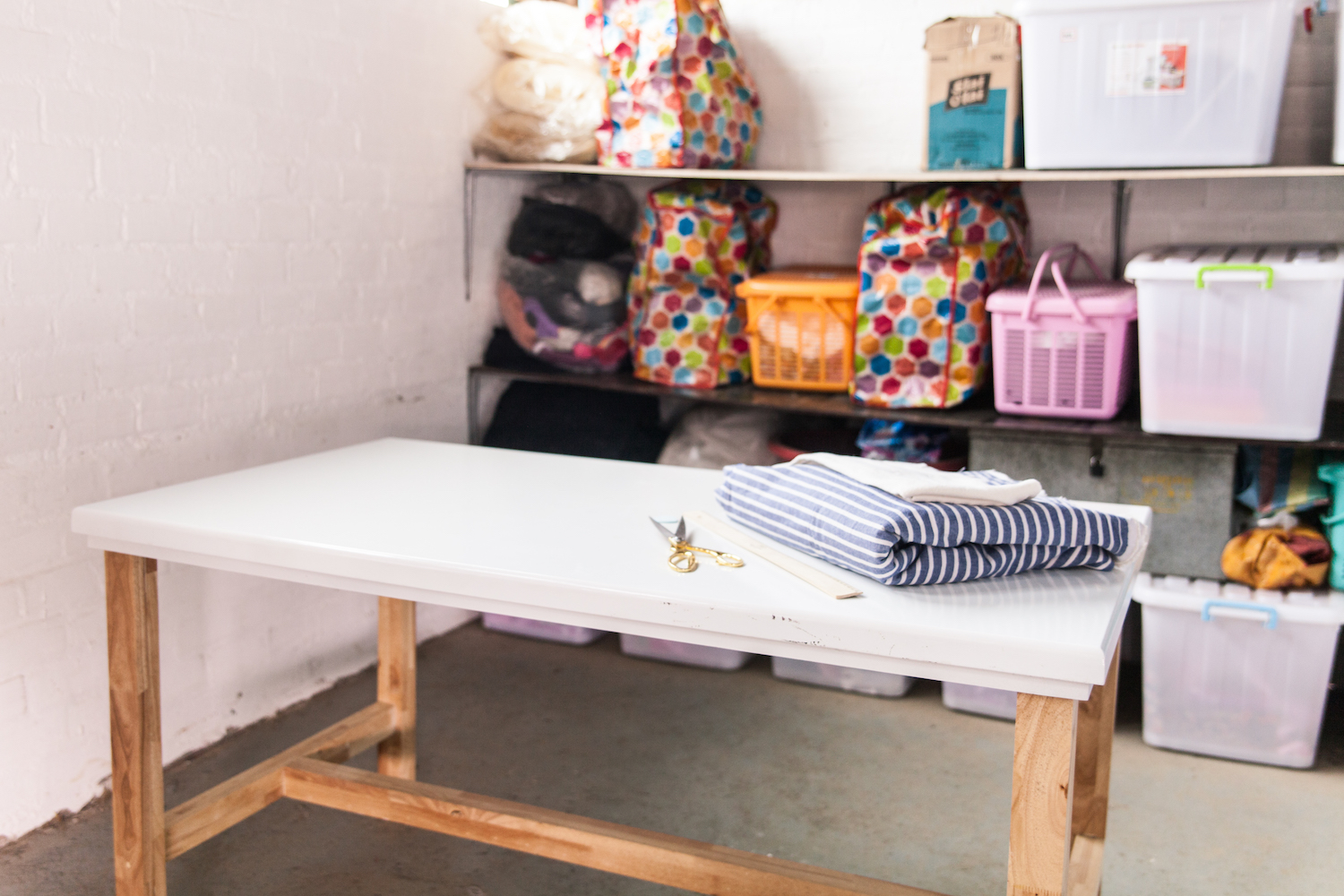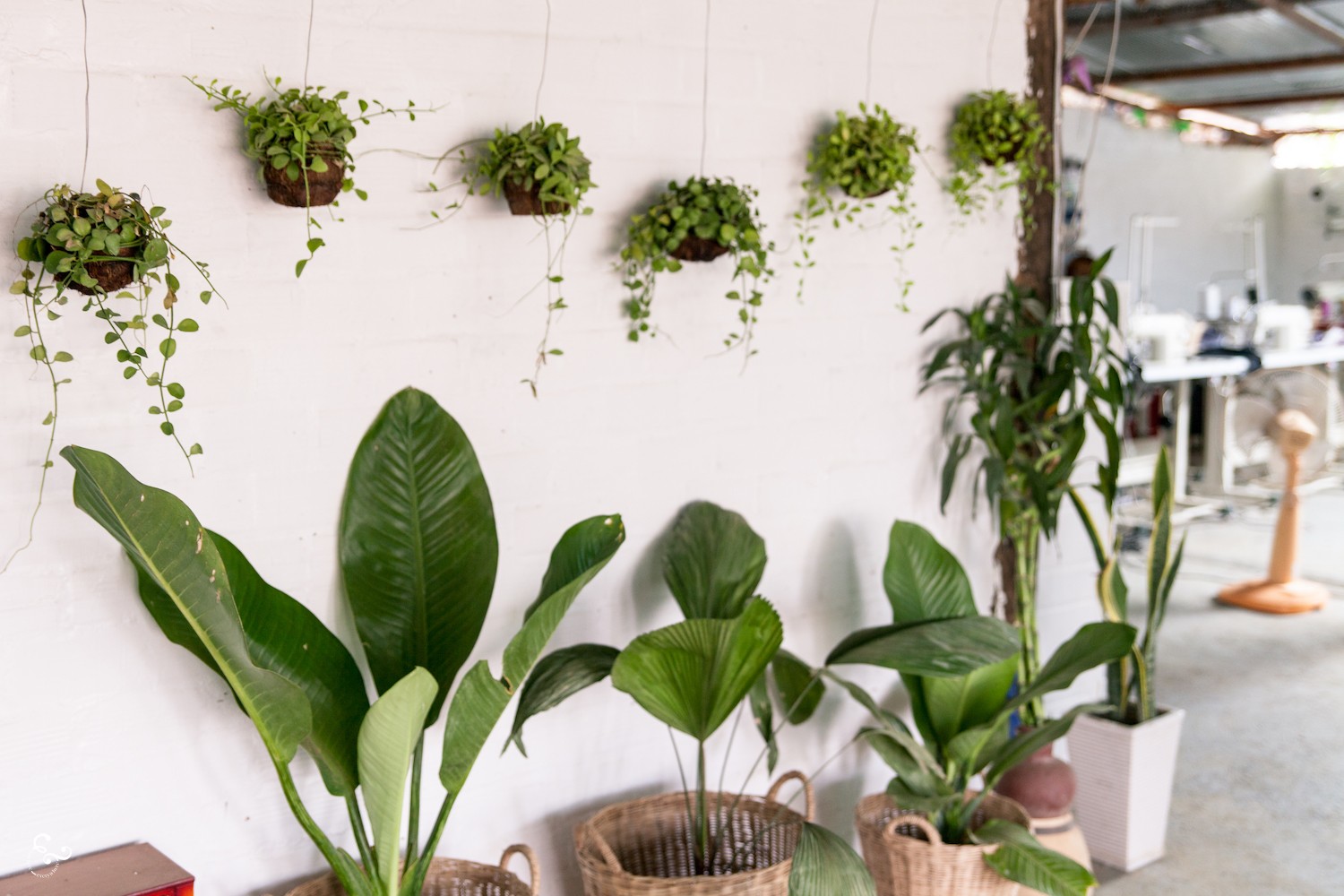
Our Production Centre
That’s our production centre above! We renovated it in March & April of 2019 just as we were launching our first products (we don’t recommend combining these two endeavours at the same time!). It wasn’t this way a few months earlier when we began working with the centre. Below is our story and a lot of before and after photos! It’s not perfect but we are determined to have a relaxing, positive, organized work space people enjoy being in, no matter where in the world it is.
Why do we have our own centre?
It’s a good question. Most businesses head out to China and similar countries to get their items manufactured. They do not spend time on the ground. They rely on what they’re told. They don’t control the fabrics, processes and the labor. They receive a lot of imperfect products that can’t be used. Lots of the centres are huge and require a lot of energy and resources to run. We understand why, it’s much cheaper, quicker & easier, but we didn’t want to do this.
Our founder previously lived in this area having worked here for nearly a decade and knew a major issue (in most developing countries) was better jobs. International development and aid reaches real roadblocks when there aren’t decent jobs available so we wanted to be a small provider of this. We didn’t want to come in and reinvent the wheel; we wanted to work with a struggling local organization who really needed a hand up. We also wanted to be able to ensure that whether sewing products or making coconut bowls, there was a good workspace to do so. Nearly every factory across Asia does not have good working conditions (they’re often terrible) so finding one that truly does, where you visit regularly to check on everything, is like a needle in a haystack. Creating our own means we could eliminate this problem and over time make it a much better space for the workers already there.
We also wanted to source fabrics from sustainable sources which meant doing huge amounts of research for 100% hemp and finding a sustainable supplier of this nearby. From farm to product without all the waste in the middle! In addition to this we wanted to be on the ground sourcing redirected fabrics to turn into products. This is nigh on impossible when outsourcing to factories or buying cheap goods from the internet. We also wanted to implement processes like using off-cuts for labels and the like – this isn’t easy to manage in large factories or businesses that aren’t your own and can get easily confused. It’s also not the most efficient method of labor (as opposed to say running a whole print run on synthetics and stitching them in) so many places naturally can’t accomodate this. And we wanted every last inch of the scraps collected so we could re-use them and close our loop.
Lastly, most companies have to throw away 10 – 20% of the goods they receive for imperfections, incorrect colors and styles etc. By being on the ground so much and having our centre means we don’t have these problems or waste. We’re able to catch stuff in real time so we don’t have items we can’t sell or need to discard.
Lis had spent some time working on the womens skills program in this area in the past preserving the knowledge of generations, and knew there was a little place to develop and create better products and work if they wished. With the women’s agreement, we set about developing this initially by being there every day for 3 months and then again for months. And so it will go on!
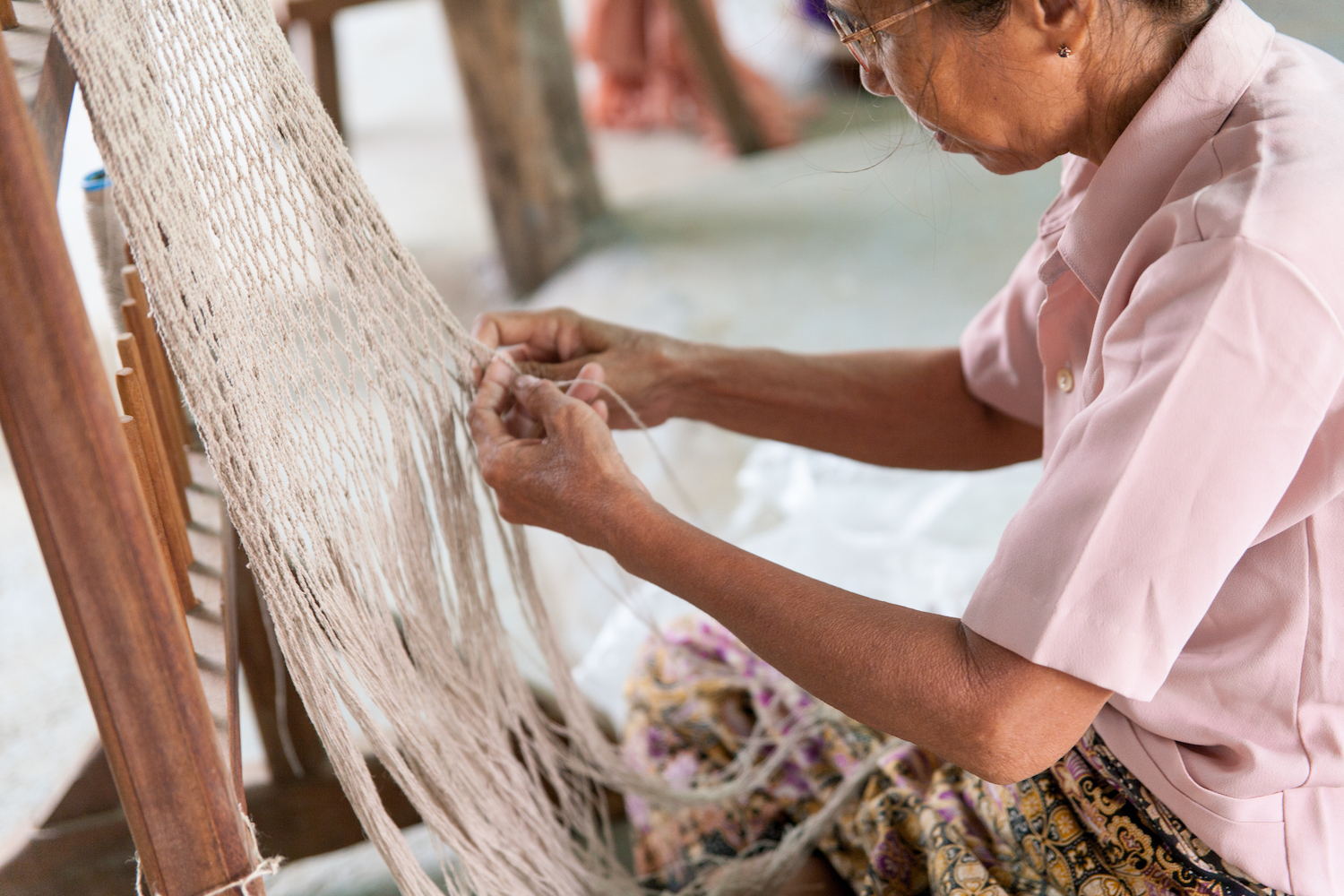

The Before
As the building had been quickly put together by the organization as best as possible with cheap materials and little paid labor, it was really susceptible to getting wet during the longer rainy seasons (climate change), it had next to no storage inside, was small and crammed full, was burning plastics a few days a week to get rid of rubbish and nylon fabrics and was dark and messy inside. It was doing what it could with what it had to support the community.
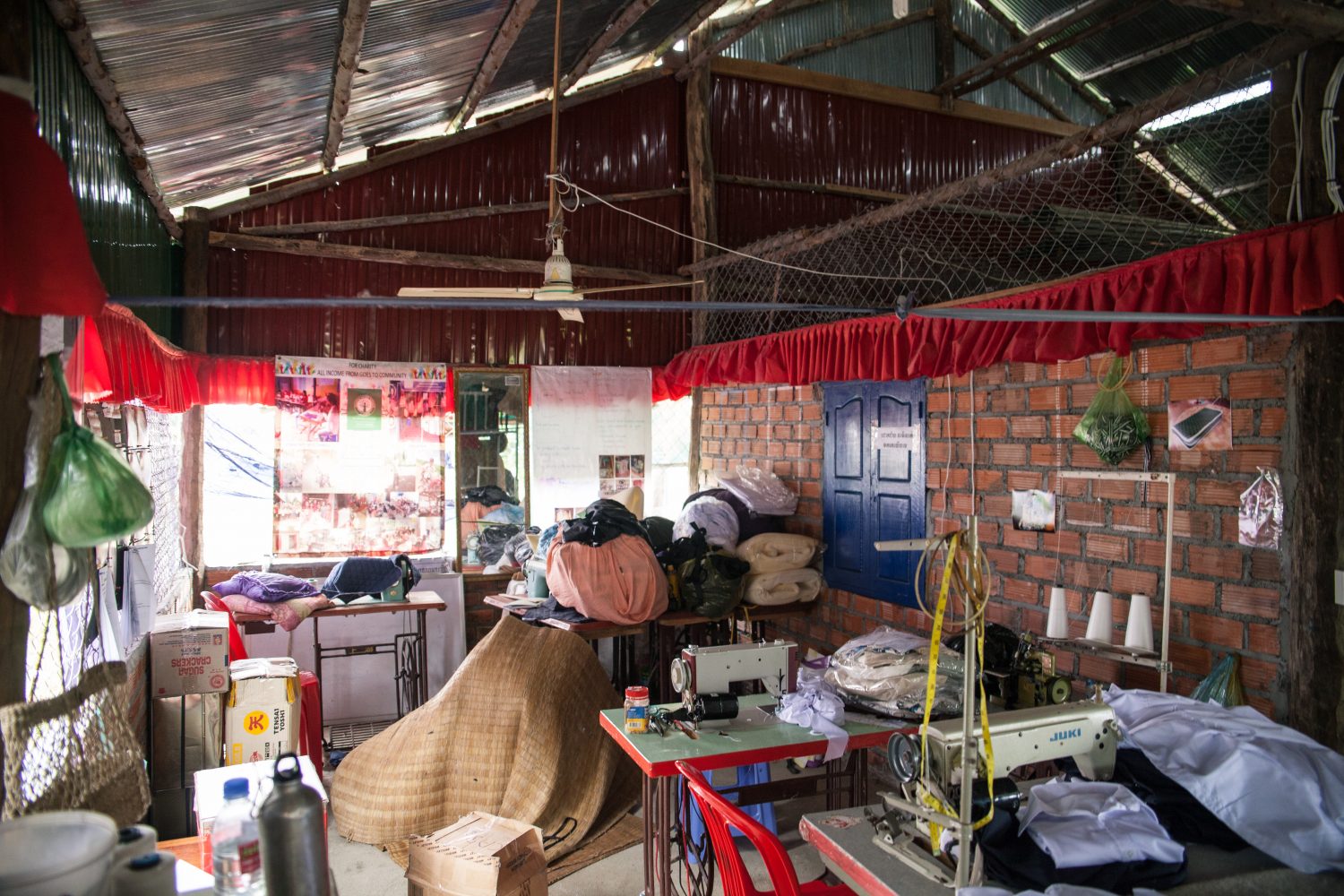
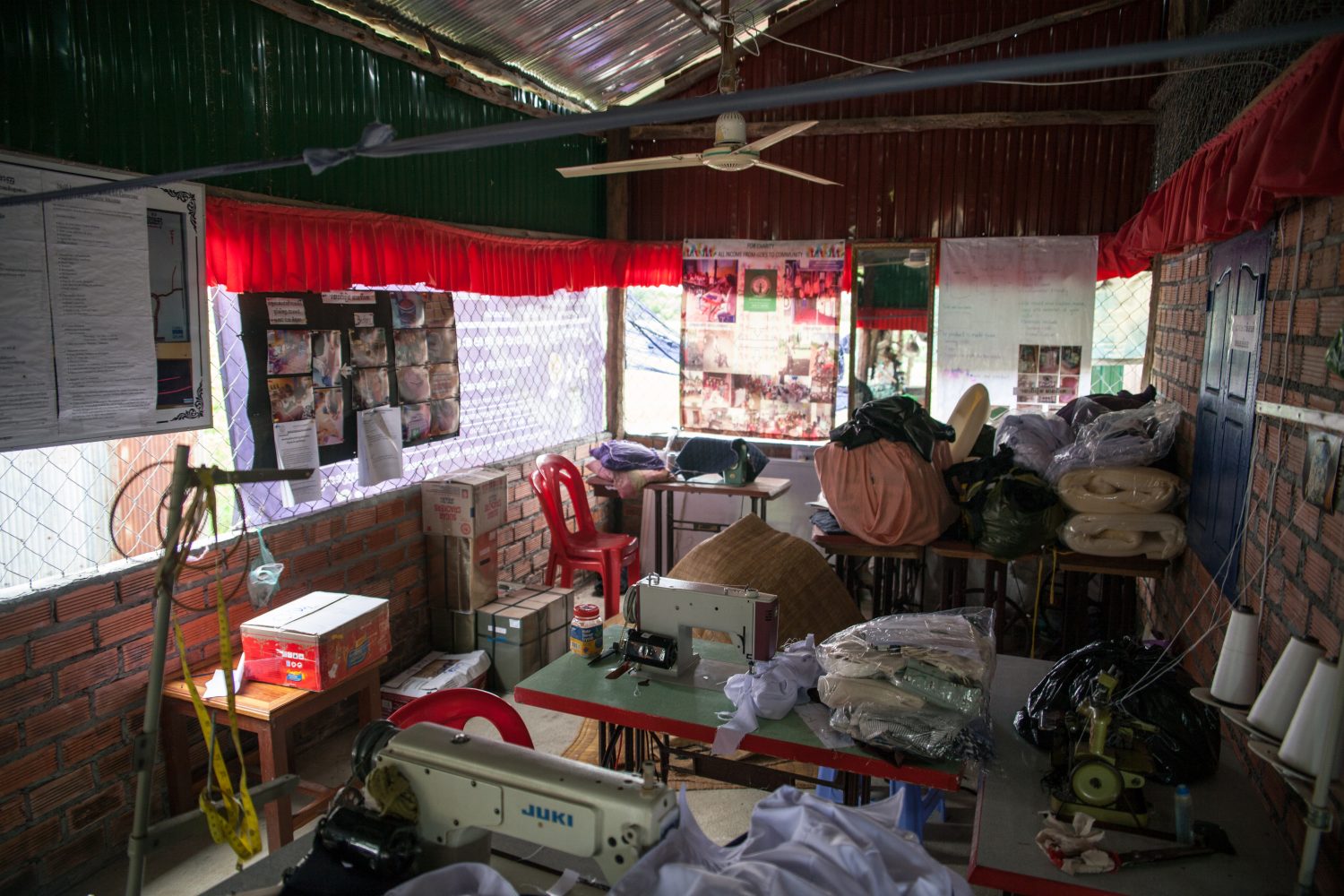
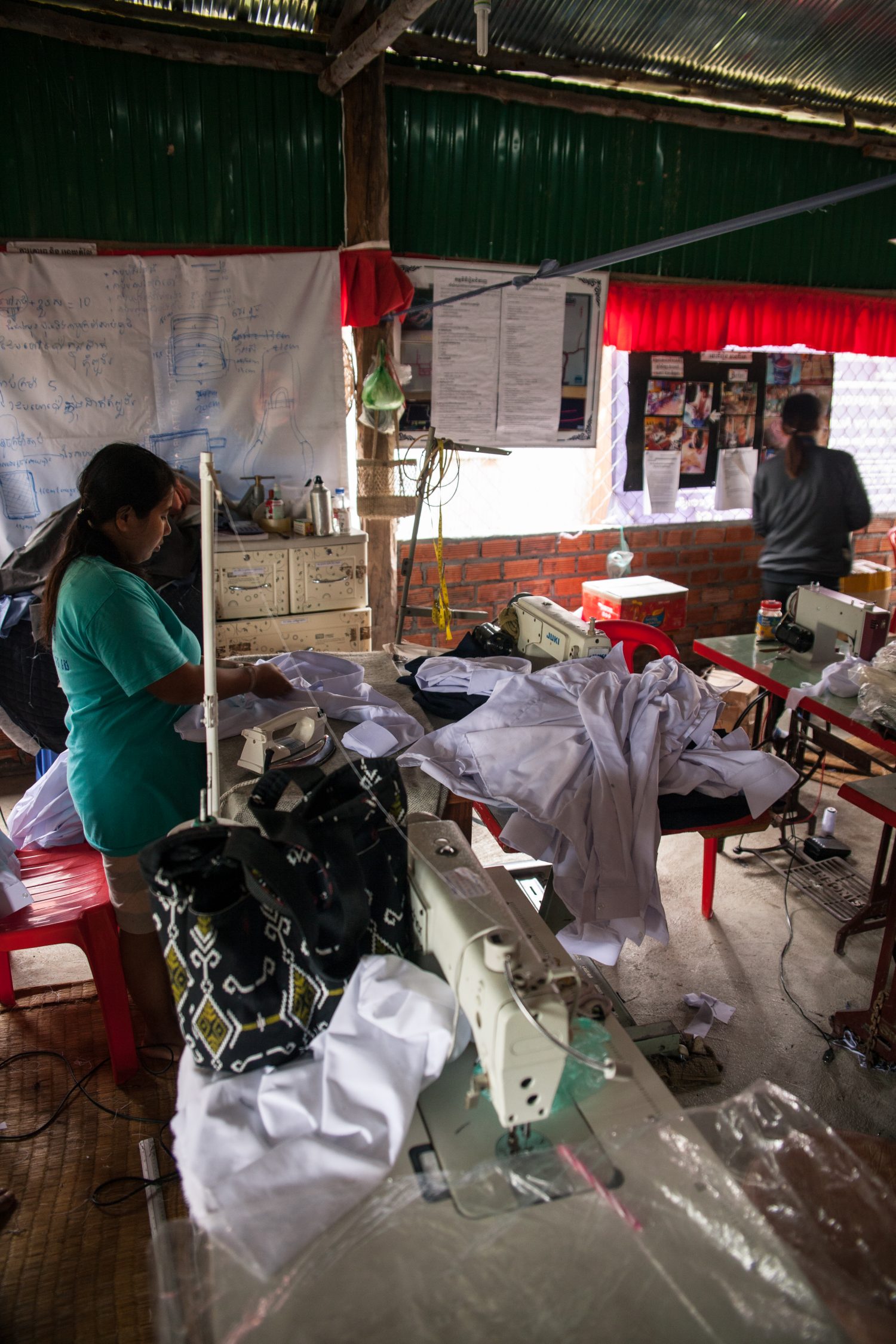
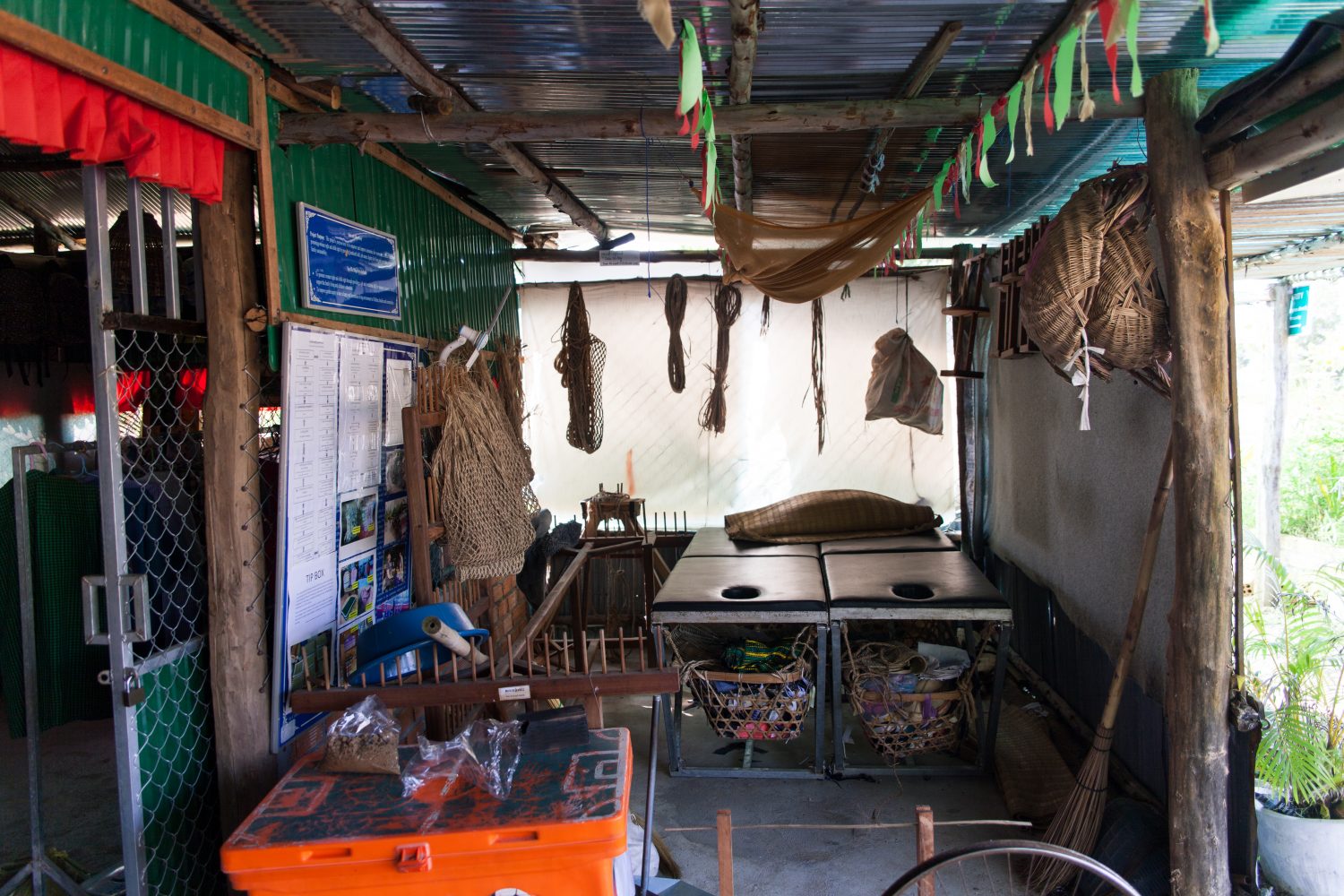
The Interim
Our first step before we could plan for a major renovation, was cleaning out the place, bringing in some initial storage and adding in necessary equipment to make work easier & happier alongside putting in place facilities such as clean drinking water and cups to reduce plastics. We wanted to show we were committed, make it nicer and get ready for the big overhaul.
We provided the security guard with a foldable bed and proper mattress for the evenings. We bought new (which are all second-hand from Japan) sewing machines to make work better and less frustrating. We bought new (also second-hand from Japan which is much better than the Chinese equipment) electrical items and improved processes such as making coconut oil by buying pressing machines (stopping the practise of having to wring it with your hands which was enormously time consuming work and difficult). We started a collection for soft plastics for the plastic bricks and placed everything into storage.

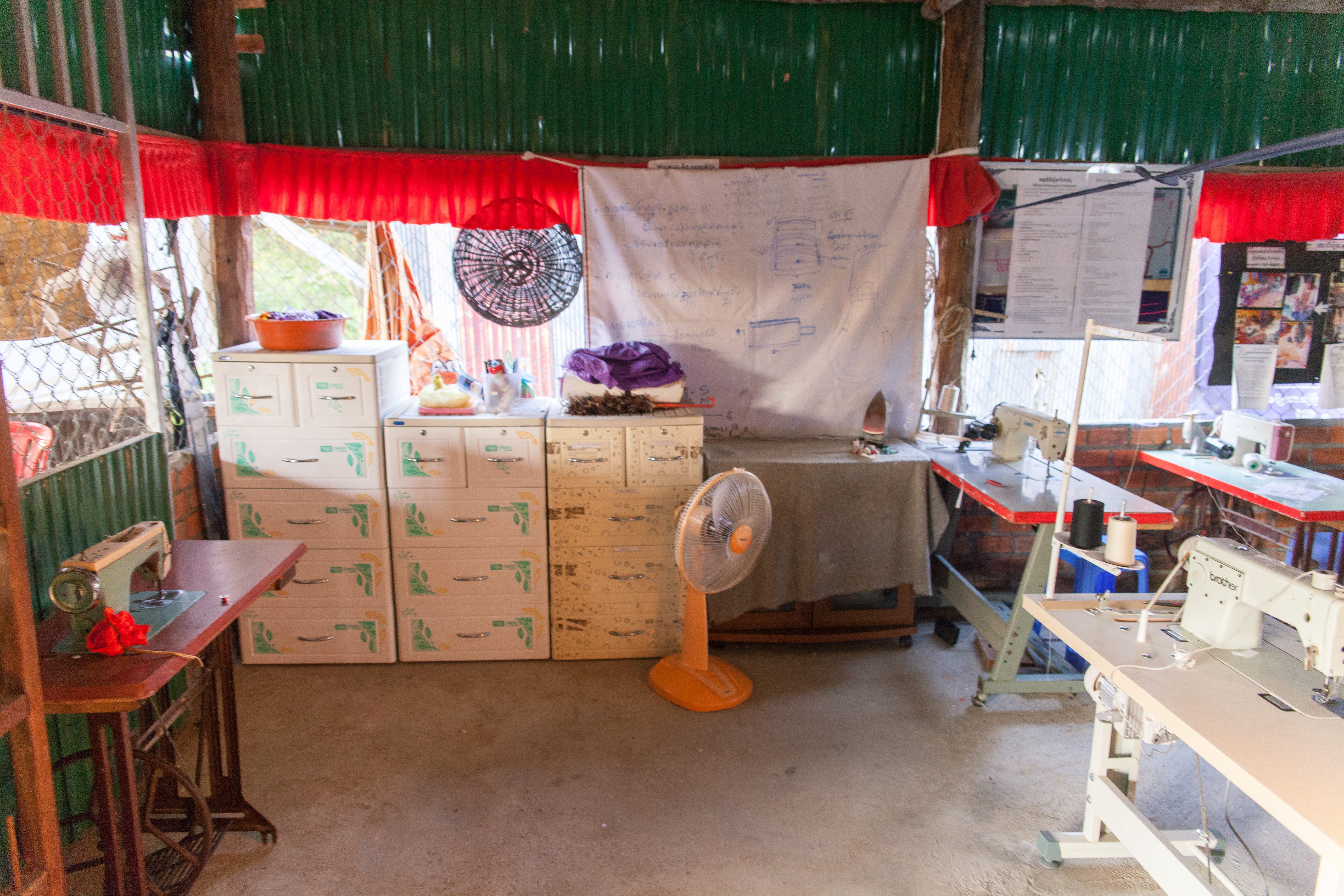

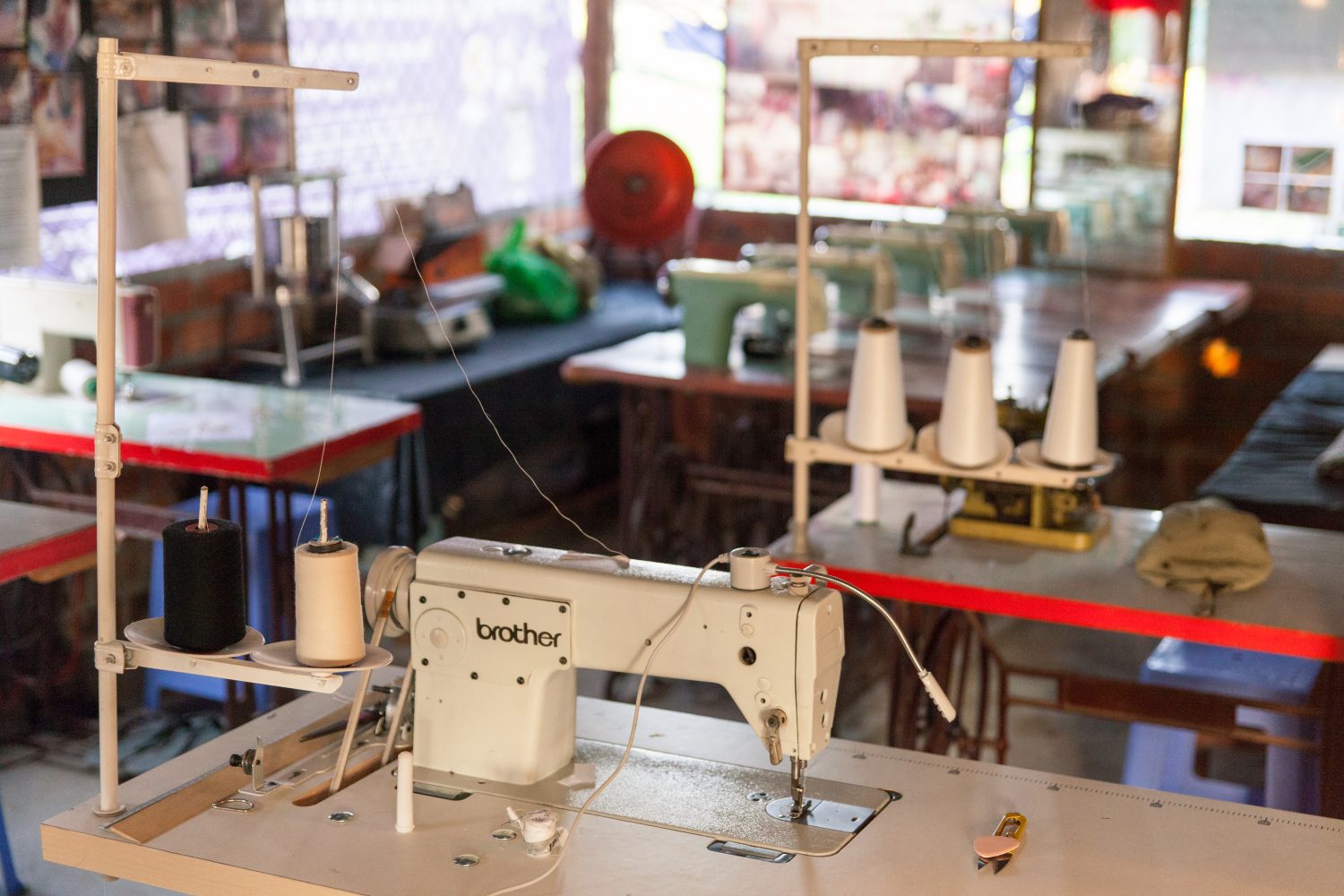
Plants
The few plants that existed out the front were all dying or dead. As we are in rural Cambodia, the ground is largely really hard clay. There is however good soil available which we sourced to repot surviving plants and pot a whole lot of new ones from the local garden centre that will stand up to the heat. We began by lining these across the front of the centre and deweeding (and de-frogging!) the area. We hope on our next visit that these plants have done well and during our renovation we can keep extending the plans for this.
We planted numerous herbs too so the workers can use this in their homes and we want to bring a number of plants inside when we renovate the centre.




The Renovation
It was really important to us to make this as nice a space as possible with the restrictions we have out here! Our friends came together with local workers and we got to work. We extended it significantly, gave it proper walls everywhere and roofing inside for no-more rainy days, rendered everything (on very uneven bricks!), added more shelving and storage and make it a much happier place to work, bring your children to and run workshops!
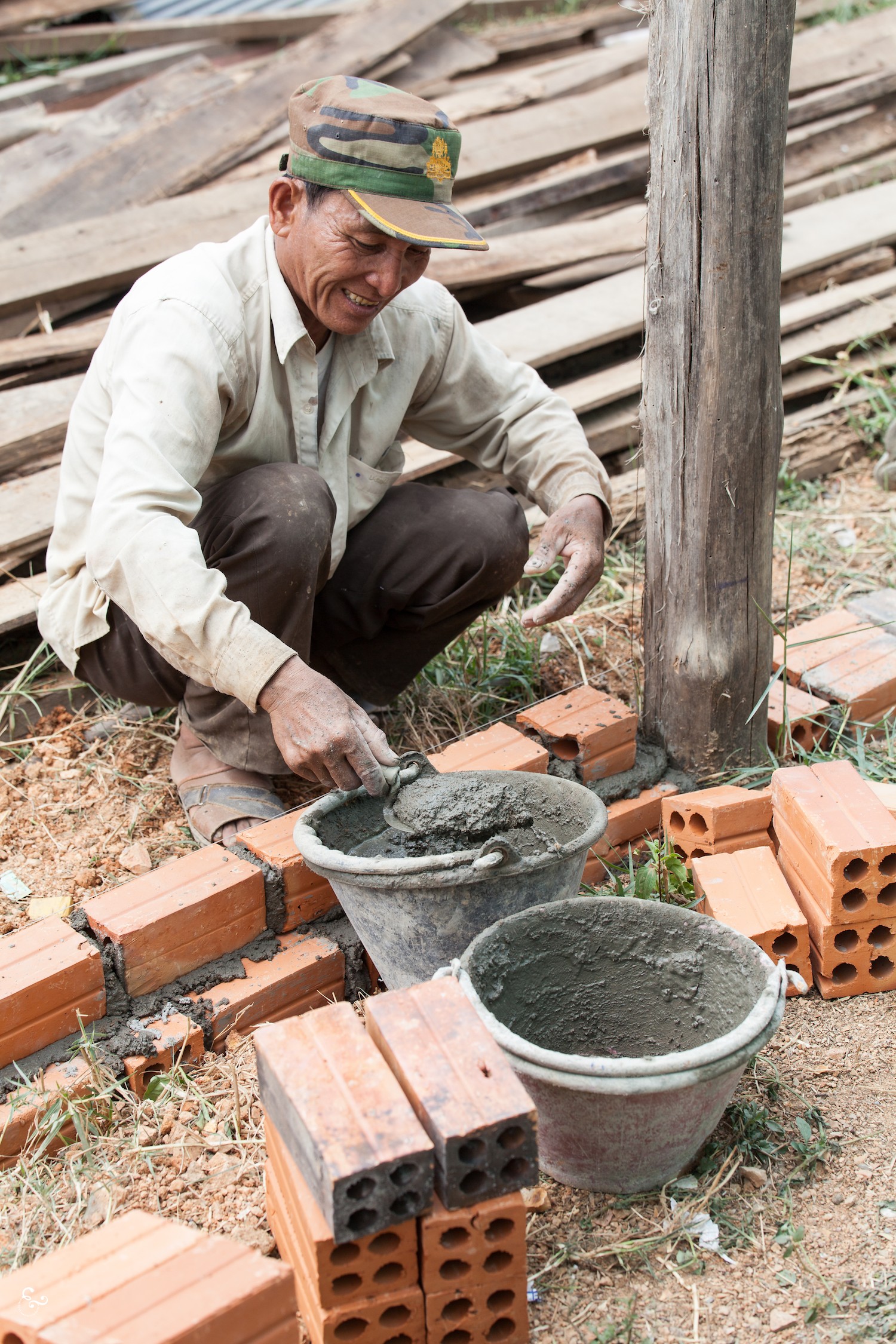
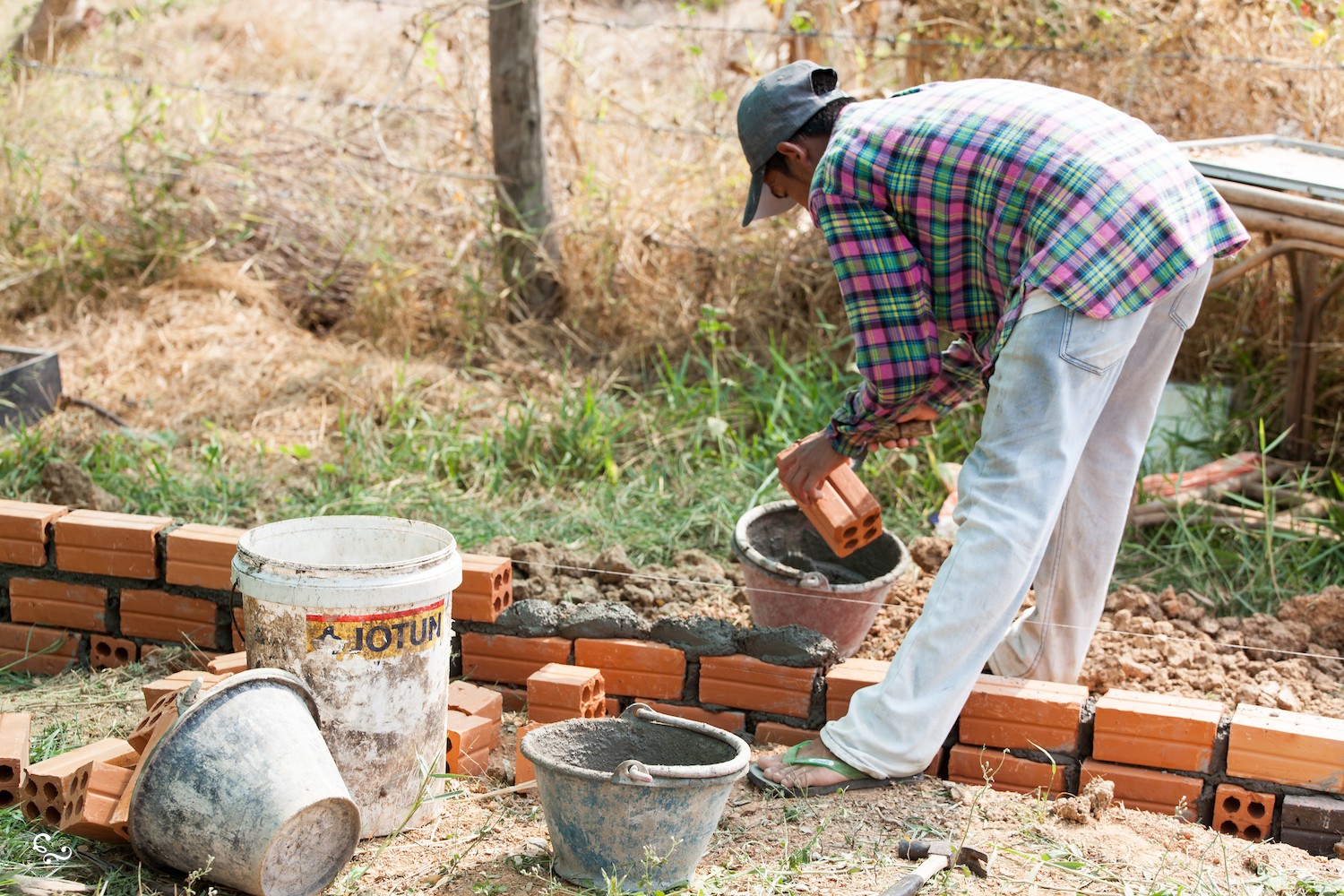
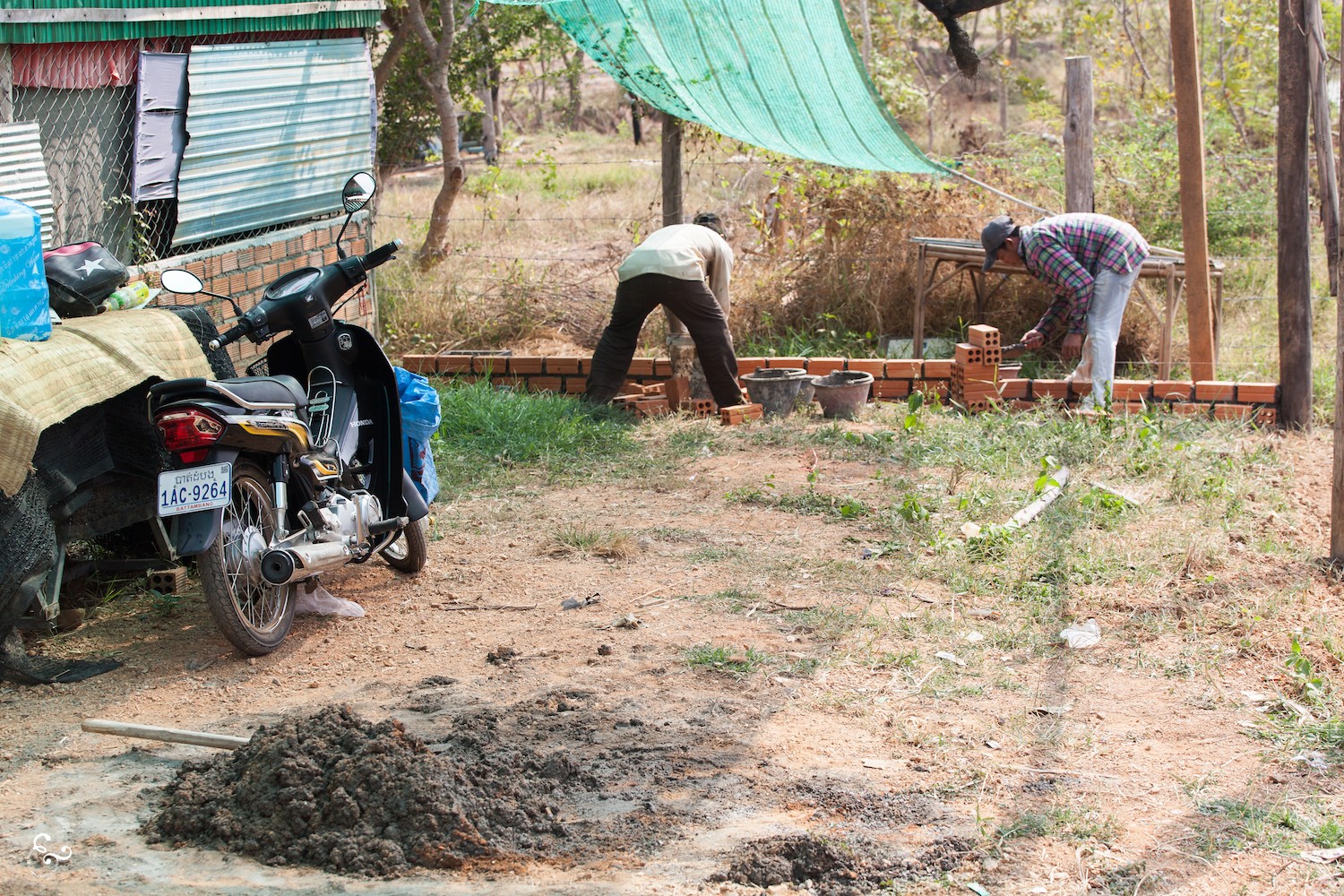
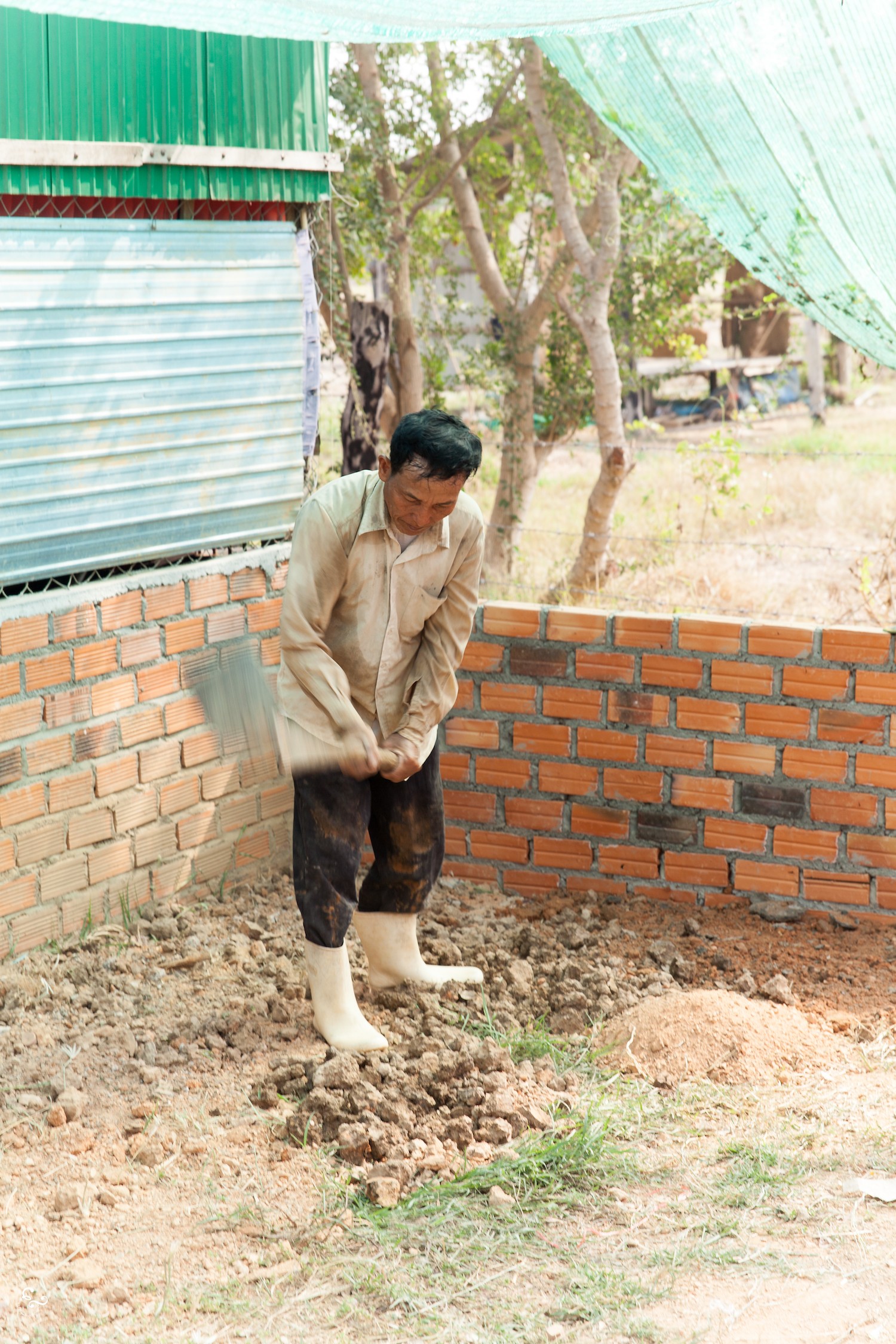
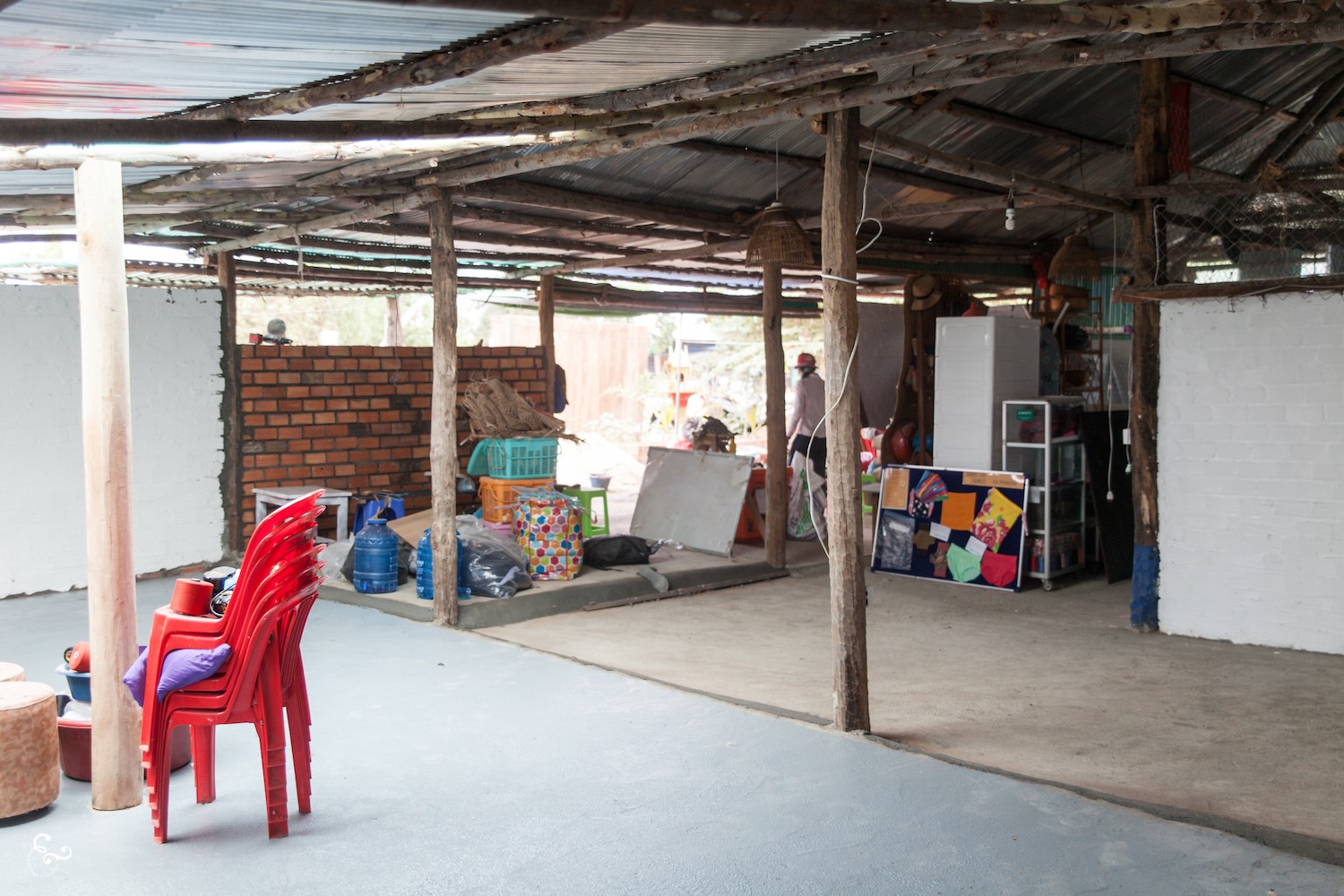
The Now!
After all the building renovation we installed water bottle air-conditioning recycling nearly 600 bottles to use, added fans and lights everywhere, set up a lunch area, a proper cutting section and have organized inside with new furniture and systems. What are the bottles for? We got the idea from homes in Bangladesh. If you blow on your palm with an open mouth you’ll notice it’s warm arm. Now purse your lips – much cooler! This is the idea of the bottles. It’s not perfect but with climate change and the increasingly hot weather we’re hoping it will help aid a cooler airflow through the building.
